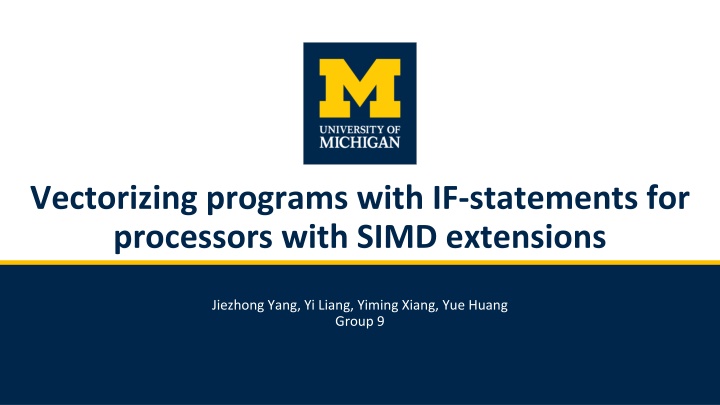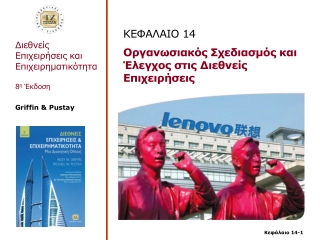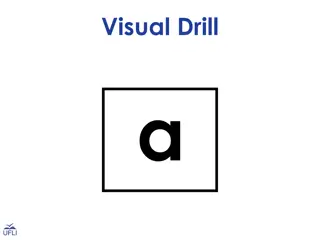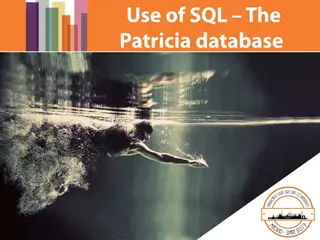
Advanced Techniques for Vectorizing Programs
Explore the concept of vectorizing programs with a focus on IF-statements for processors with SIMD extensions. Learn about the motivation behind vectorization, the efficient use of SIMD instructions, and strategies for optimizing performance in CPUs with and without masked instructions.
Uploaded on | 1 Views
Download Presentation

Please find below an Image/Link to download the presentation.
The content on the website is provided AS IS for your information and personal use only. It may not be sold, licensed, or shared on other websites without obtaining consent from the author. If you encounter any issues during the download, it is possible that the publisher has removed the file from their server.
You are allowed to download the files provided on this website for personal or commercial use, subject to the condition that they are used lawfully. All files are the property of their respective owners.
The content on the website is provided AS IS for your information and personal use only. It may not be sold, licensed, or shared on other websites without obtaining consent from the author.
E N D
Presentation Transcript
Vectorizing programs with IF-statements for processors with SIMD extensions Jiezhong Yang, Yi Liang, Yiming Xiang, Yue Huang Group 9
Motivation (high-level overview) Vectorization is crucial for performance IF-statements are bad for vectorization IF-conversion is used for CPUs that support masked instructions What about CPUs without masked instructions?
SIMD SIMD: Single Instruction, Multiple Data Data-level parallel Each unit performs the same instruction with different data Instruction Pool Efficient Loads several data at once Values are processed in parallel even on a non-superscalar processor Processor Processor Data Pool Processor Processor
for (int i = 0; i < 1024; i++) { c[i] = a[i] + b[i]; } Load 4 double elements into vector v_a from contiguous memory starting from a[i] v_a, v_b, v_c, etc. are pre- defined vectors by SIMD SIMD Illustration for (int i = 0; i < 1024; i += 4) { simd_load(v_a, &a[i]); simd_load(v_b, &b[i]); v_c = simd_vaddd(v_a, v_b); simd_store(v_c, &c[i]); } Add 4 elements of va with 4 elements of v_b element- wise, return the result Store 4 elements of vector v_a into contiguous memory starting from c[i]
With IF-Statement? for (int i = 0; i < 1024; i++) { if (m[i] < 0) c[i] = a[i] + b[i]; else c[i] = 0; }
for (int i = 0; i < 1024; i++) { if (m[i] < 0) IF-Conversion: Example c[i] = a[i] + b[i]; else c[i] = 0; What if a[i] shouldn t be accessed? p is also a vector } for (int i = 0; i < 1024; i += 4) { p = m[i] < 0 v_a = load &a[i] if p v_b = load &b[i] if p v_add = v_a + v_b store v_add to &c[i] if p store 0 to &c[i] if !p } for (int i = 0; i < 1024; i += 4) { p = m[i] < 0 v_a = load &a[i] if p v_b = load &b[i] if p v_add = v_a + v_b v_c = select(p, v_add, 0) store v_c to &c[i] } Exception!! maskload maskstore blendv Using Masked Instruction Exception can be masked Using Select Instruction Exception cannot be masked
IF-Conversion: Comparison Masked instructions Conditionally operate instructions depending on the mask bit Select instructions Both branches are executed in an unmasked manner Select by the mask bit before store to memory According to the Intel manual, select is faster than masked Why don t we just always use select instructions? Select is not safe: it does not mask exceptions occurring on the unselected data
IF-Conversion: Process Begin Check for exceptions Exceptions confirmed No exceptions confirmed Otherwise Exceptions unconfirmable Employ Employ select instructions masked instructions What if masked instructions are not supported?
IF-Conversion: Process Not all SIMD instruction sets support masked instructions Intel AVX512, ARM SVE, and RISC-V: support both ARM NEON and IBM VSX: only support select What will modern compilers do in this case? Current approach: out of luck! Scalar code guarded by IF-cascades: memory operation is guarded by a branch for (int i = 0; i < 1024; i++) { if (m[i] < 0) c[i] = a[i] + b[i]; else c[i] = 0; }
Our goal Two reasons why compilers don t generate select instructions when no masked instructions Exception Our solution: optimized LLVM code generation for vectorizing IFs The current capability of transforming IF-statements into select instructions is limited for nested IFs Our solution: IF-select based on statement matching on the IR level As a result, scalar code guarded by IF-cascades As a result, scalar code guarded by IF-cascades Two reasons why compilers don t generate select instructions when no masked instructions Exception The current capability of transforming IF-statements into select instructions is limited for nested IFs for (i = 0; i < 1024; i++) { if (a[i] < b[i]) { if (a[i] < 10) c[i] = a[i] + b[i]; else c[i] = a[i] - b[i]; } }
IF-select Transformation: Algorithm if (cond) dest = val1; else dest = val2; dest = select(cond, val1, val2) if (cond) dest = val1; dest = select(cond, val1, dest)
case1: dest = select(cond, val1, val2) condition case2: dest = select(cond, val1, dest) IF_then IF_else dest1 = val1 dest2 = val2 IF_then IF_else IF_then IF_else dest1 = val1 dest2 = val2 dest1 = val1 Check dependency! nothing match! dest2 = val4 dest1 = val3 dest1 = select(cond, val1, val3) dest2 = select(cond, val2, val4) no dependency in at least one block case2 dest1 = select(cond, val1, dest1) then_stmt = get_next(then_stmt) dependency in both block can t transformation, the corresponding order can t be changed similar if dest2 have nothing match
If-select Transformation: Example for (i = 0; i < 1024; i += 4) { simd_load(v_a, &a[i]); simd_load(v_b, &b[i]); v_add = simd_vaddd(v_a, v_b); v_sub = simd_vsubd(v_a, v_b); v_cond1 = simd_vfcmplt(v_a, v_10); v1 = simd_vselect(v_cond1, v_sub, v_add); simd_load(v_c, &c[i]); v_cond2 = simd_vfcmplt(v_a, v_b); v2 = simd_vselect(v_cond2, v_c, v1); simd_store(v2, &c[i]); } for (i = 0; i < 1024; i++) { if (a[i] < b[i]) { if (a[i] < 10) { c[i] = a[i] + b[i]; } else { c[i] = a[i] - b[i]; } } } for (i = 0; i < 1024; i++) { if (a[i] < b[i]) { c[i] = select(a[i] < 10, a[i] + b[i], a[i] - b[i]); } } for (i = 0; i < 1024; i++) { c[i] = select(a[i]<b[i], select(a[i] < 10, a[i] + b[i], a[i] - b[i]), c[i]); }
The optimized LLVM code generation When the compiler cannot confirm exception & processor does not support masked instructions, it will use scalar code. Can we do better? Transform some masked instructions to select instructions! addr might be invalid when simdload? Vector comparison if (v_p != 0) { v_1 = load addr } v_a = select(v_p, v_1, v_a) v_a = load addr if v_p Solution Add padding when allocation. Padded to the next multiple of the hardware s vectorization factor. (In our example with 256- bit SIMD instructions, it is padded to the next 32 bytes)
Experimental Evaluation Tested on SW26010 processor used in Sunway TaihuLight supercomputer which does not support masked instructions Using Open64 Compiler The baseline is Open64 vectorization Not nested Innermost loop- dependent IF- statement Two-level nested IF-statement Not vectorized Loop excluded from vectorization
LLVM Optimization Evaluation Tested on IBM power processor with IBM AltiVec vector instructions Using LLVM The baseline is the unvectorized kernel optimized only with the standard LLVM optimization pipeline (-O3).
Groups Commentary Advantage: Easy to apply for nested loop Evaluation: test for both overtime as well as kernel time Limitations: Application scope: Only helpful for CPUs without masked instructions Weaknesses: Only description about the LLVM optimization, which is not clear
Thank you for listening! Any Questions? References Sun, H., Gorlatch, S. & Zhao, R. Vectorizing programs with IF-statements for processors with SIMD extensions. J Supercomput 76, 4731 4746 (2020).






















